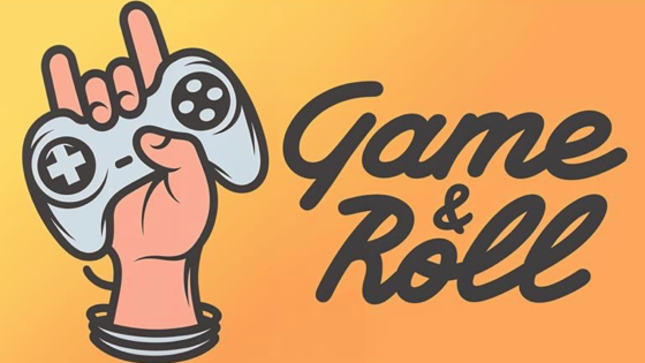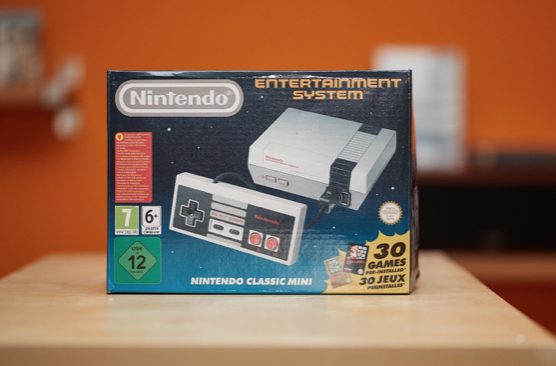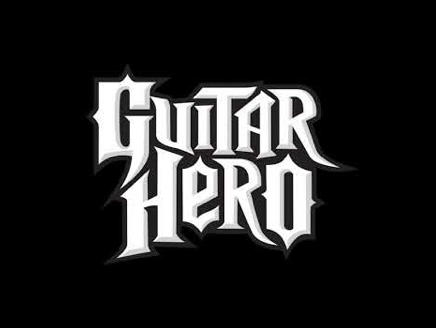
Since the dawn of video games, sound and music have been an important part of the experience. From the iconic blips and bloops created by the arcade sound chips in Pac-Man, to the meticulous methods of composing the legendary Super Mario Brothers “Overworld” theme, music and sound have a special place in video game history.
Heavier forms of music, mostly from rock and metal genres, have been a mainstay of video games. Games like Doom, Quake, Unreal Tournament, Grand Theft Auto, and even Fortnite have incorporated rock and metal music into their games. For example, in Fortnite, you can choose songs from a playlist which includes genres ranging from pop, hip-hop, to rock. It wouldn’t be appropriate to go to your Fortnite account and buy the goth outfit with hip-hop as background music, right? So, for this article, we’ll be looking at the impact of rock and metal music on video games.
A Brief Introduction to Video Game Music
The 1990s was a time of great advancement in technology. Home computers were almost ubiquitous, and the Internet was in its infancy. Video games had a similar trajectory: as consoles became a household fixture, so too did the technology required to produce software for them. A decade prior, home consoles were big and bulky, required a cartridge to play game software, and had very limited sounds.
That all changed when Nintendo entered the industry with the Nintendo Entertainment System (NES). For the sake of this article, we will truncate the vast contributions of the NES and just focus on one: it gave music composers a viable job by being sound designers and video game composers.

Koji Kondo’s “Overworld” theme from Super Mario Brothers is already etched in video game history as the most recognizable tune in a video game. All of that was made using only 4 channels of the Ricoh 2A03 (NES sound chip), which was greatly limited with regards to the capacity of sounds to be used.
Going back to the 1990s, as sound chips developed, so did the ability to compose more complex and intricate music for games. The 16-bit consoles Super Nintendo and Sega Genesis had advanced sound chips that could load recorded samples alongside the traditional sounds they produce. This made a hybrid compositional technique where sampling from sources and using electronic sounds meshed.
Then, all of that changed with the arrival of Sony’s PlayStation (PSX). Up until that point, games were still loaded into cartridges with very little onboard memory and relied on the sound chip of the console to read the compositional data stored in the cartridge (except for some examples where a sound chip was also in the cartridge). The compact disc (CD) format of the PSX meant it could store a lot of data, including music and videos. Composing music for the PSX, subsequent consoles, and the PC has never been easier.
Early Examples of Rock and Metal Music in Video Games
The earliest examples of rock and metal music in video games that I can recall are from the Mortal Kombat 2 soundtrack for the Sega Genesis. The inclusion of the “Danger” variants of each stage’s themes was a genius idea. Because of the nature of fighting games to be a test of patience, hitting a danger zone (less than 20% HP) meant the match needed to be played at a different pace.
This approach was inspired by Street Fighter 2 (SF2), except that for SF2, the “Danger” theme was a sped-up version of the stage theme music. Mortal Kombat 2’s approach was to make the music heavier, adding psychological pressure to the players.
Gran Turismo, a popular racing simulation series for the PlayStation line of consoles, included licensed music from major label artists. The official soundtrack for 1999’s Gran Turismo 2, and some of those included in the same game were from the likes of Filter (“Hey Man, Nice Shot”), Garbage (“I Think I’m Paranoid”), Hole (“Use Once and Destroy”), The Cardigans (“My Favorite Game”), and Creed (“Unforgiven”).
1999 also saw the release of the iconic skateboarding series, Tony Hawk’s Pro Skater. The first two games are considered revolutionary because of the game mechanics introduced, and the soundtrack. For Tony Hawk’s Pro Skater 1, the soundtrack featured the likes of Primus, Dead Kennedys, The Ernies, Goldfinger (whose “Superman” became a meme not only for Tony Hawk fans), and Even Rude.
The second game in the series, Tony Hawk’s Pro Skater 2, upped the ante by acquiring the license to songs from artists like Rage Against the Machine, Papa Roach, Millencolin, Powerman 5000, and Anthrax. This trend continued in the main series and the Tony Hawk’s Underground series. However, the recent remake of the first two games included a diverse selection of music from other genres alongside the soundtrack from the game’s original releases.
Japanese fighting game series, Guilty Gear, also included rock and metal to its soundtrack. In fact, the game is associated heavily with the genre so it’s impossible not to have a Guilty Gear game without at least one metal track. The songs for the series are made by its creator, Daisuke Ishiwatari, and have some references to his musical influences. For example, the Guilty Gear Strive song “What do you fight for?” interpolates a section of The Beatles song “Come Together” in the first verse.
The release of Grand Theft Auto changed the landscape for video game soundtracks as it featured not only select songs from a specific genre, but also the concept of choosing which songs the game should play. Using the in-game radio when inside a car, players can choose which radio station to tune in to with their corresponding genres; taking inspiration from the arcade racing game, Outrun, where players choose a station that contains one song that loops throughout the course. This concept aligned well with the open-world nature of Grand Theft Auto.
At first, Grand Theft Auto’s music was composed in-house by a trio of musicians collectively known as Da Shootaz. The game used licensed music for the heavier music starting with Grand Theft Auto IV. This installment used music from Sepultura, The Smashing Pumpkins, Black Sabbath, Aerosmith, Deep Purple, AC/DC, and Bon Jovi; among others. Perfect for grinding your GTA V account.
This series also popularized the “custom soundtrack” by allowing players to drop music files into the game’s music folder to be played on a dedicated radio station.
Modern Examples of Rock and Metal Music in Video Games
It would be an understatement if I did not mention the widespread impact of the Guitar Hero series and its numerous spin-offs. The game was meant to be the perfect fusion of video games, music, and education. By including licensed songs, including the very elusive Beatles catalog, players could now enjoy role-playing as a musician. The company responsible for these games, Harmonix, will have a significant impact later, as we’ll see in this article.

While we’re on the subject of music education and video games, I would like to add that the most under-rated modern video game released is the Ubisoft music education game, Rocksmith. The game features the same mechanics as Guitar Hero, but the major difference is that players can actually learn the songs because the game needs a guitar or bass to be played. I have played this game and the wide selection, and progressive difficulty of the songs made me feel like a beginner. And this is considering I have more than 20 years of music experience!
Shooters and action games historically have a rock and metal soundtrack. The soundtrack for Quake II was a sharp contrast to the music Trent Reznor of the industrial-metal band Nine Inch Nails made for Quake I. Where Quake I was ambient, Quake II was heavy. Doom III also has a heavy soundtrack. Gears of War incorporated both ambient and heavy music. Unreal Tournament also featured rock and metal to their soundtrack, which I have fond memories of. One of the games in the Halo series had songs composed by American guitar virtuoso, Steve Vai.
Other genres of video games also incorporate heavier sounds to their soundtracks, or license music from big label artists.
Marvel’s Guardians of the Galaxy features songs from around the 1980s and includes artists such as Blondie, Tears for Fears, Europe, KISS, Iron Maiden, and Rainbow. Electronic Arts also has a history of including rock and metal songs in their sports titles from NBA Live to the FIFA series, and now FC 24. The same can be said with 2K Games for their NBA 2K series.
Epic Games’s battle royale shooter game, Fortnite, introduced Fortnite Festival as a separate game in the series. The concept of Fortnite Festival is similar to the games Harmonix produced before Epic Games acquired the company. As of this writing, the current season of Fortnite Festival includes songs from the band Metallica. The six songs included in the game are classic guitar-shredding hits “Enter Sandman,” “Fuel,” “Ride the Lightning,” “Master of Puppets,” “The Unforgiven,” and “Wherever I May Roam.”
The acquisition of Harmonix by Epic Games signifies the importance of music as a unique player experience. While Fortnite Festival has some negative reviews, it nonetheless bridges the gap between music and video games. The concept is surely a welcome addition to the way music is incorporated into video games.
Rock and Metal-Adjacent Music in Video Games
Some games have clear rock and metal influences. Dark Souls, The Witcher, Path of Exile, Killing Floor 2, and Metal Gear Rising: Revengeance has the type of soundtrack that isn’t strictly within the realms of rock and metal.
Street Fighter also incorporated elements of heavy music to some of their soundtracks. For example, “Precious Heart” from Street Fighter EX plus alpha has a clear heavy sound with guitars dominating half of the instrumentations. The fifth game in the main series, Street Fighter V, featured a heavy “djent” song for the game’s main menu music. This can be changed to a more mellow song.
Music with darker moods like synthwave can be considered an adjacent genre to rock. The mobile game PinOut features a synthwave soundtrack composed by Douglas Holmquist. Despite its danceable tunes, the songs are relatively dark-sounding.
The critically acclaimed action-RPG game, Transistor, features ambient and post-rock influences by its composer Darren Korb. “Old Friends” is a signature song in the game that features the melancholic sound of post-rock.
The Impact of Rock and Metal Music In (and Out of) Video Games
Rock and metal music has a lasting impact in video games. Various companies have included them in their soundtracks, while composers continue to create music merging the sounds of these genres to their own style.
Outside of video games, musicians and bands tend to cover or re-arrange songs from video games. For example, the band Metroid Metal whose covers of Metroid songs have been popular with fans. Super Mario Brothers also have heavier re-arrangements by bands. I remember from my younger days this one parody song to the tune of Nirvana’s “Smells Like Teen Spirit” but the lyrics were directly lifted from the English mistranslation of the opening cutscene from the classic Sega Genesis game “Zero Wing,” aptly named “All Your Base Are Belong to Us.”
Perhaps the most lasting impact of rock and metal music in video games is the fusion of traditional and electronic instruments to create a unique sound. While this is not exactly an example of video game music, the American chip-rock band Anamanaguchi has clearly stated that video games are one of their main inspirations. By making and performing music using guitars, drums, and Game Boys, the band has achieved the cross-over popularity of both heavy music and video games. In fact, the whole “chiptune” movement is directly inspired from video game music.
Nintendo’s Animal Crossing series has featured rock arrangements of songs by its beloved singing dog, K.K. Slider: “K.K. Metal” and “K.K. Rock”. The game also features a cat who is dressed like a rock star (Katt). In New Horizons, the player can acquire musical instruments and “play” them.
I can list more but the point is clear: rock and metal music in video games is an inseparable part of popular culture.